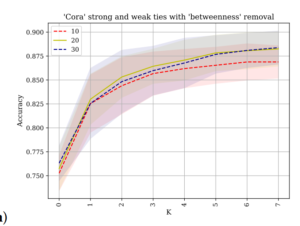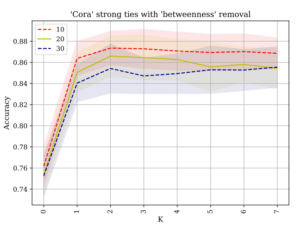Motivation
The diversity of the field of computer science has always interested me and how it can bleed into so many other fields. Social and Information Networks have many different utilities outside its own field, such as machine learning. This led me down a rabbit hole looking up the overlap of these two fields until I came across this paper which highlights how the concept of strong and weak ties can be used to optimize prediction algorithms.
How the Training Algorithm Works
Neural networks can be thought of as neurons in the brain, they change their connections over time. The paper uses two datasets to showcase what could happen when assuming weak ties are strong ties in a dataset that is fed into a neural network. Using weak ties as strong ties the neural network is able to make initial inferences on the dataset it might not have done prior. The goal of this is to increase the predictability accuracy of labelling unknown data.
What Happened to the Model after it was Trained?
These datasets were networks for citations of authors of scientific publications with an edge to represent a weight value for the average number of relationships to publications (seven different publications for the first dataset and six for the second). Percentages of the dataset were removed based on centrality metrics e.g. betweenness, closeness, or VoteRank. This data can have weak ties added to the dataset using the concept of bridging two nodes that share a strong tie to a common node. With this new addition to the dataset the algorithm was able to produce more accurate predictions to the unlabeled data in certain instances.


Here is an example graph showing how weak ties acting as strong ties can increase the predictability of neural networks in this case using betweenness as the centrality metric.
Conclusion
This topic although not explored too much shows potential for making strides in the field of machine learning. In cases where there are gaps in the data, these types of computations can help increase the accuracy of predicting labels for unknown pieces of data. Overall, its quite surprising how these two seemingly unrelated fields in computer science can have large overlap that contribute to their respective fields even further.
Citations
Hajiakhoond Bidoki, Neda & Mantzaris, Alexander & Sukthankar, Gita. (2020). Exploiting Weak Ties in Incomplete Network Datasets Using Simplified Graph Convolutional Neural Networks. Machine Learning and Knowledge Extraction. 2. 125-146. 10.3390/make2020008.